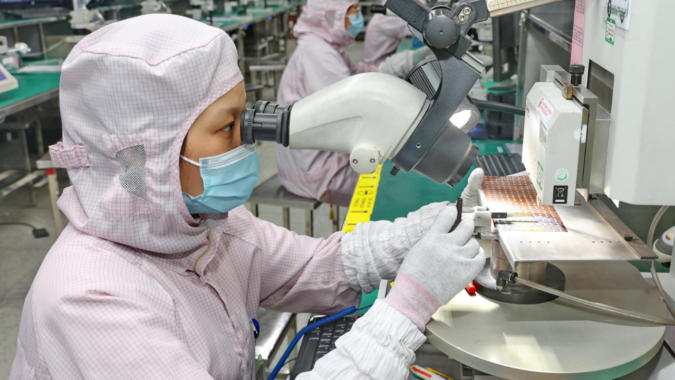BEIJING: China’s government on Thursday criticised the Netherlands for joining Washington in expanding curbs on Chinese access to technology to make processor chips that Western governments say might be used in weapons or to commit human rights abuses.
Processor chips and the technology to make them are increasingly sensitive as Beijing develops its own chip industry and high-tech weapons. Washington in October blocked Chinese access to US tools to make the most advanced chips and is lobbying European and Asian allies to tighten their own controls.
The Dutch trade minister said in a letter to legislators Wednesday that national security requires controls to be tightened on exports of technology that uses ultraviolet light to etch circuits on the most advanced chips. ASML of the Netherlands is the only global supplier.
A foreign ministry spokeswoman complained that “an individual country,” a reference to the United States, was trying to “safeguard its own hegemony” by abusing national security as an excuse to “deprive China of its right to development.”
“We firmly oppose the Netherlands’s interference and restriction with administrative means of normal economic and trade exchanges between Chinese and Dutch enterprises,” said the spokeswoman, Mao Ning. “We have made complaints to the Dutch side.”
Mao appealed to the Netherlands to “safeguard the stability of the international industrial and supply chain.”
Industry analysts say China’s lack of access to ASML etching technology is a serious handicap in its effort to develop a domestic chip industry. Chinese vendors can produce low-end chips used in autos and most consumer electronics but not those used in smartphones, servers and other high-end products.
Dutch Prime Minister Mark Rutte and US President Joe Biden held talks in January on ASML’s chip machines.
ASML’s extreme-ultraviolet, or EUV, equipment uses light to etch microscopically precise circuits into silicon, allowing circuits to be packed more closely together. That increases their speed and reduces power demand.
Processor chips and the technology to make them are increasingly sensitive as Beijing develops its own chip industry and high-tech weapons. Washington in October blocked Chinese access to US tools to make the most advanced chips and is lobbying European and Asian allies to tighten their own controls.
The Dutch trade minister said in a letter to legislators Wednesday that national security requires controls to be tightened on exports of technology that uses ultraviolet light to etch circuits on the most advanced chips. ASML of the Netherlands is the only global supplier.
A foreign ministry spokeswoman complained that “an individual country,” a reference to the United States, was trying to “safeguard its own hegemony” by abusing national security as an excuse to “deprive China of its right to development.”
“We firmly oppose the Netherlands’s interference and restriction with administrative means of normal economic and trade exchanges between Chinese and Dutch enterprises,” said the spokeswoman, Mao Ning. “We have made complaints to the Dutch side.”
Mao appealed to the Netherlands to “safeguard the stability of the international industrial and supply chain.”
Industry analysts say China’s lack of access to ASML etching technology is a serious handicap in its effort to develop a domestic chip industry. Chinese vendors can produce low-end chips used in autos and most consumer electronics but not those used in smartphones, servers and other high-end products.
Dutch Prime Minister Mark Rutte and US President Joe Biden held talks in January on ASML’s chip machines.
ASML’s extreme-ultraviolet, or EUV, equipment uses light to etch microscopically precise circuits into silicon, allowing circuits to be packed more closely together. That increases their speed and reduces power demand.
